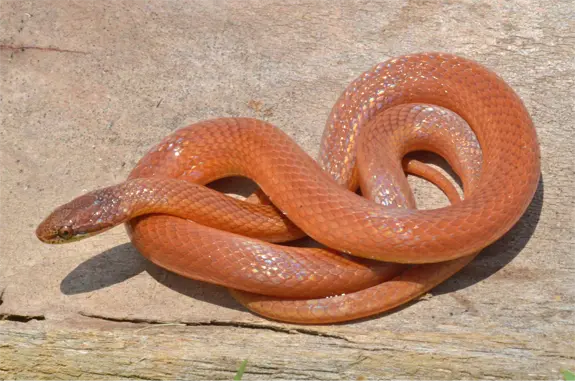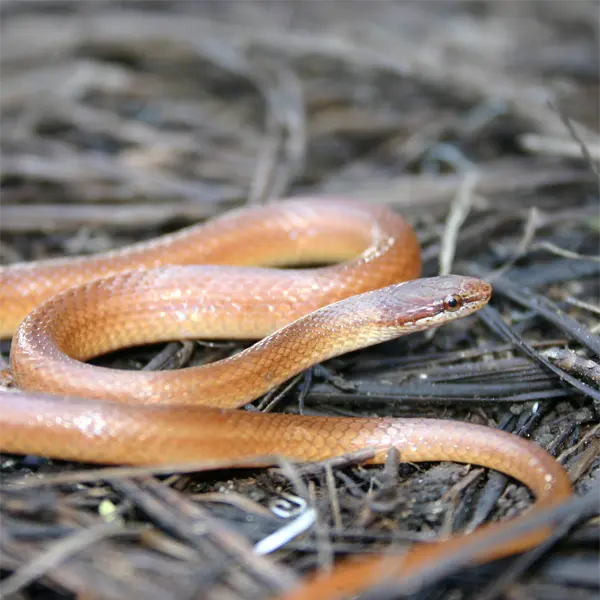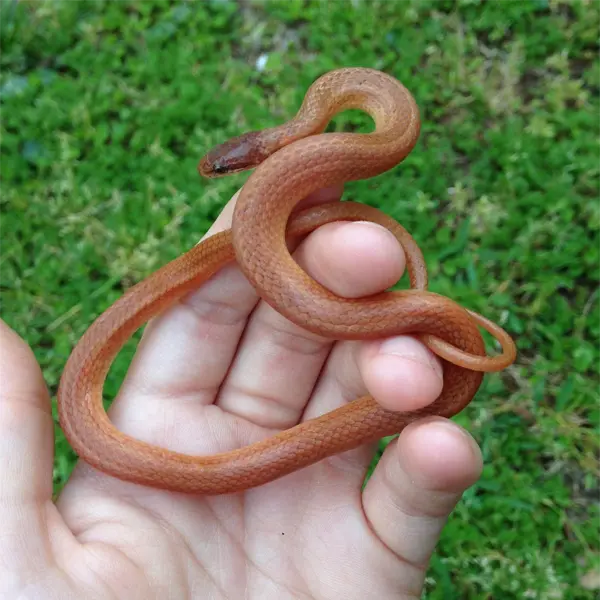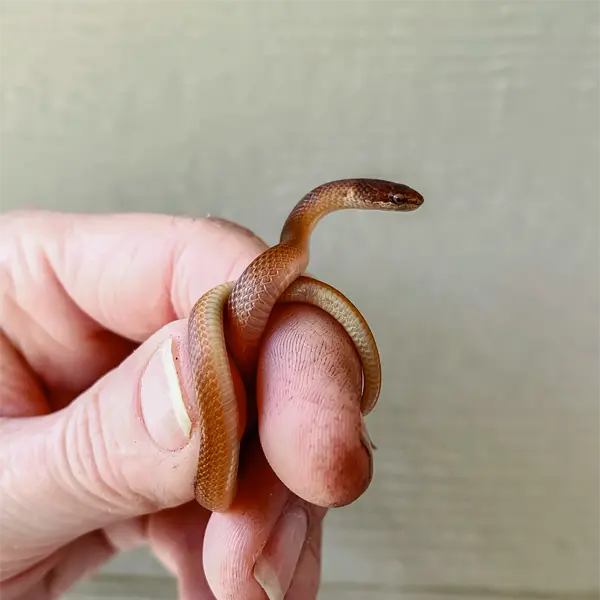The Pine Woods Littersnake
- Scientific Name
- Rhadinaea flavilata
- Also Known As
- Pine Woods Snake
- Range
- Northern, Central Florida and into the Panhandle
- Diet
- Small frogs, Salamanders, Lizards
- Life Expectancy
- 7 Years
Quick Links
The Pine Woods Littersnake in Central Florida
The pine woods littersnake (Rhadinaea flavilata) is a nonvenomous colubrid species found in the southeastern United States. As their name suggests, these secretive snakes inhabit pine forests and sandy uplands in central Florida. This comprehensive guide provides detailed identification tips, biology facts, and information on pine woods littersnake habits, reproduction, diet, potential health risks, and prevention methods if encountered near residential areas.
Appearance and Identification
The pine woods littersnake can be identified by the following juvenile and adult physical characteristics
The pine woods littersnake can be differentiated from similar species like ringneck snakes by their more slender build, divided anal plate, and reddish dorsal blotches.
Maturation Rate
Young pine woods littersnakes grow rapidly after birth. They will shed their skin frequently as juveniles to accommodate fast growth. Sexual maturity is reached by 2-3 years old. Males typically mature at a smaller size than females.
Habits and Behavior
Pine woods littersnakes are solitary, terrestrial snakes that are most active during the daytime and evening hours in warmer months. They can be found under rocks, fallen bark, and debris on the forest floor, hunting for prey. Pine littersnakes will occasionally climb into low shrubs and bushes. When threatened, they may flatten their bodies and raise their tails as a defense posture. If further provoked, pine littersnakes will quickly flee into leaf litter or underground burrows.
These docile snakes prefer cooler, moist microhabitats during the hot Florida summers. Extended droughts can impact local populations. Pine littersnakes brumate underground during winter months. They emerge in early spring to bask and become active again through late fall.
Reproduction and Lifespan
Pine woods littersnakes likely mate from March through May after emerging from brumation. Gravid females have been observed from April to July. Unlike most snake species, pine littersnakes are ovoviviparous – females give birth to 2-6 live young from July to September. The gestation period is around 60 days. Hatchlings measure 5-7 inches in length.
Females may breed annually once sexually mature. Males likely breed every other year. Pine littersnakes can live up to 7 years in the wild. Their average lifespan in captivity is 10-15 years.
Ideal Habitat and Range
The pine woods littersnake inhabits fire-maintained longleaf pine sandhill communities in central Florida. This ecosystem is characterized by well-drained, sandy soils and an open tree canopy of longleaf pines. Diverse understory vegetation includes turkey oak, wiregrass, and palmettos. The sandy substrates provide loose soil for burrows.
Average temperatures range from 60s°F in winter to 80s°F in summer with plentiful rainfall. The pine littersnake favors microhabitats with ample leaf litter and fallen logs/debris for cover and hunting. Periodic low-intensity fires help maintain ideal habitat conditions for the species by controlling dense scrub.
Diet and Feeding
Pine woods littersnakes are carnivorous, feeding mainly on soft-bodied invertebrates. Their diet consists primarily of:
- Slugs
- Earthworms
- Caterpillars
- Beetle larvae
- Ants
- Crickets
- Small spiders
- Occasional small lizards and frogs
They locate prey using chemical cues. Pine littersnakes seize and swallow prey whole, aided by their hinged jaws for consuming larger items. They may excavate prey like earthworms from soil and leaf litter. Pine littersnakes kill prey through constriction before ingesting it head first. They feed frequently on smaller prey when available.

Photo 221004859 © John Serrao, CC BY-ND

Common Health Risks
Pine woods littersnakes are nonvenomous and not dangerous to humans. Their small size and docile nature makes them unlikely to bite. On rare occasions, they may strike or bite if mistreated but cannot inject venom. Bites generally do not require medical treatment beyond basic first aid wound care. There are no known diseases transmitted by this species.
Some potential health and safety risks from pine littersnakes include:
- Bite risk is extremely low but any snake bite should be cleaned. Monitor for signs of infection.
- Allergies to snake saliva may produce swelling or rash. Seek help for severe reactions.
- Attempting to kill or handle pine snakes may result in injury if they become defensive. Admire gently from a distance.
With calm behavior around pine littersnakes, the health risks are negligible. Never try to harm or provoke snakes as this often leads to preventable bites.
Preventing Pine Woods Littersnakes
Pine woods littersnakes are timid, nonvenomous snakes that help control garden and crop pests. They pose little risk to people or pets. Prevent conflicts through the following methods:
- Seal cracks in foundations and openings where snakes may enter sheds or homes.
- Remove wood piles, leaf litter, and debris around buildings.
- Mow and clear overgrown vegetation, especially near doors and play areas.
- Discourage rodents and insects to avoid attracting snakes hunting them.
- Supervise pets when outdoors as snakes may bite if threatened. Avoid snake habitats when walking dogs.
- Be aware when gardening or picking up objects snakes may hide under. Wear thick gloves.
- If encountered inside, gently guide the snake into a large container using a broom/shovel and release outdoors in natural areas away from homes. Never kill nonvenomous species – they help control undesirable pests.
With some awareness and basic snake-proofing, pine littersnakes pose very little risk of issues for homeowners if occasionally encountered in rural properties near pine forest habitats. Never attempt to kill or handle any snake unless properly trained in removal.
Pine Woods Littersnakes in Central Florida – Conclusion
In summary, pine woods littersnakes are small, nonvenomous colubrids well-adapted to pine sandhill forests in central Florida. They serve important ecological roles consuming garden and crop pests. Pine littersnakes are unlikely to be encountered near homes and pose negligible health risks. With proper identification, prevention, and gentle removal of any snakes found indoors, pine littersnakes can be peacefully coexisted with. Lethal control methods should always be avoided for docile, beneficial snake species that are important components of local ecosystems.







